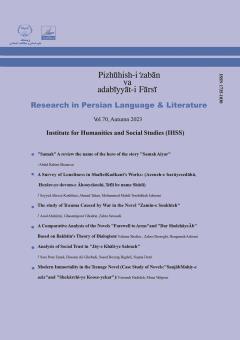Publishing research articles in contemporary period is an appropriate chance to share research findings of different scholars and informing audiences about new scientific achievements. Although their publishing have been quantitatively increasing in recent decade, there
More
Publishing research articles in contemporary period is an appropriate chance to share research findings of different scholars and informing audiences about new scientific achievements. Although their publishing have been quantitatively increasing in recent decade, there were no due attention to their assessment and criticism.
This article, with a descriptive-analytic method, assesses those kinds of research articles published from 1381/2001 to 1390/2011. The research expresses advantages and disadvantages of these articles and presents a picture of the status of scientific article writing in domain of literary studies. In so doing, 345 articles were selected as examples and most important subjects under focus of authors were identified and were classified in frame of text-based, context-based, author-based, reader-based, and different articles. Moreover, patterns of cooperation between authors, and quality and quantity of used resources in these articles were presented in different charts and tables. As this issue is so important and to assess the accuracy of obtained results from main sample size, another set of 345 articles were exactly reviewed in two groups of “evidence 1” and “evidence 2”.
This review shows that although articles have various subjects, apply different kinds of resources, consider some interdisciplinary approaches particularly in second half of this decade relative accuracy in composing coherent articles, specialty of some journals related to literature and considerable increase of university instructors and students cooperation in publishing articles, there are lots of deficiencies in these articles, like methodology, dominance of descriptive approach, repeated contents, lack of critical view, high frequency of education-based articles, and spread of quantitative and formal criteria and so on…
Manuscript profile


